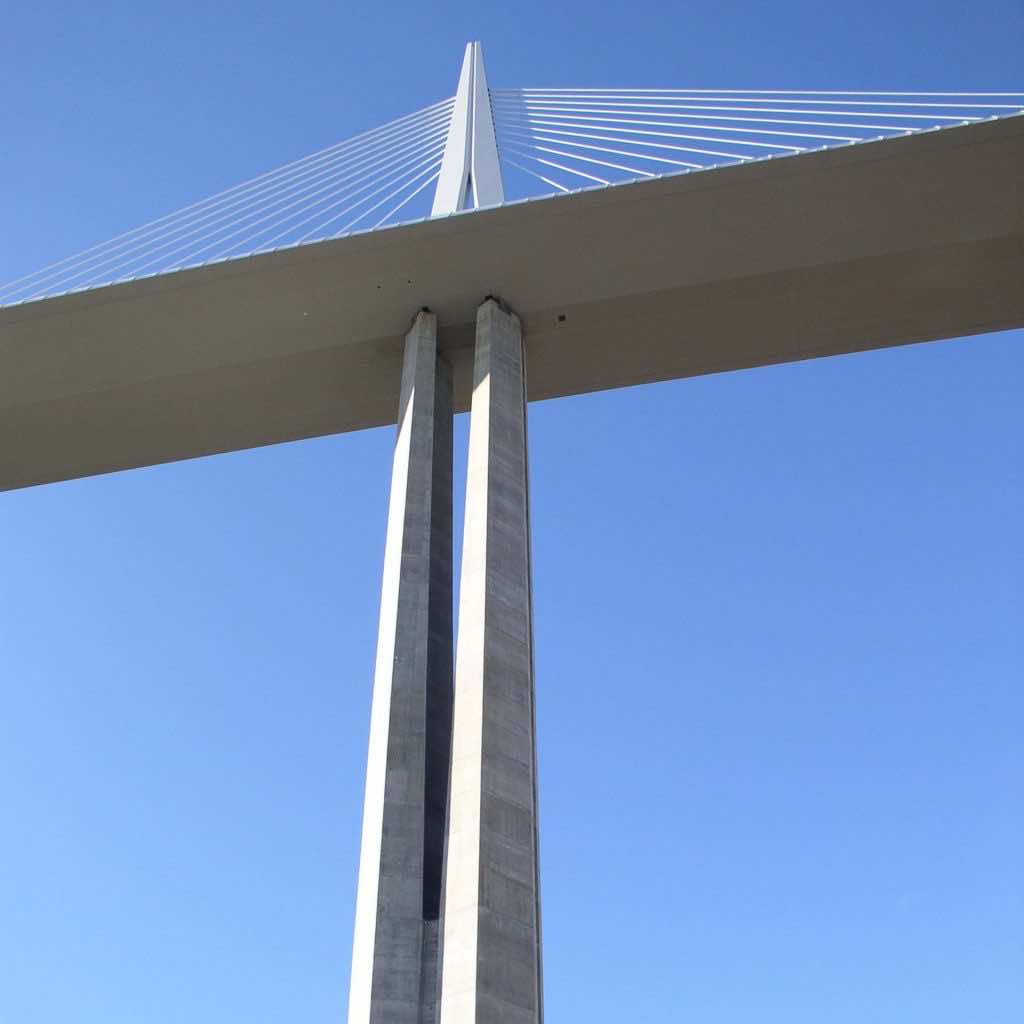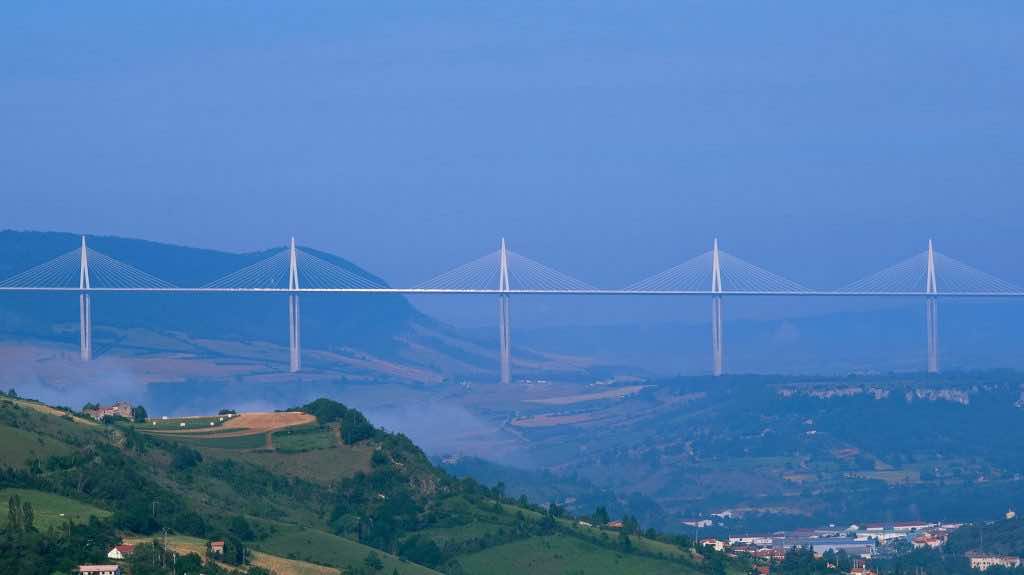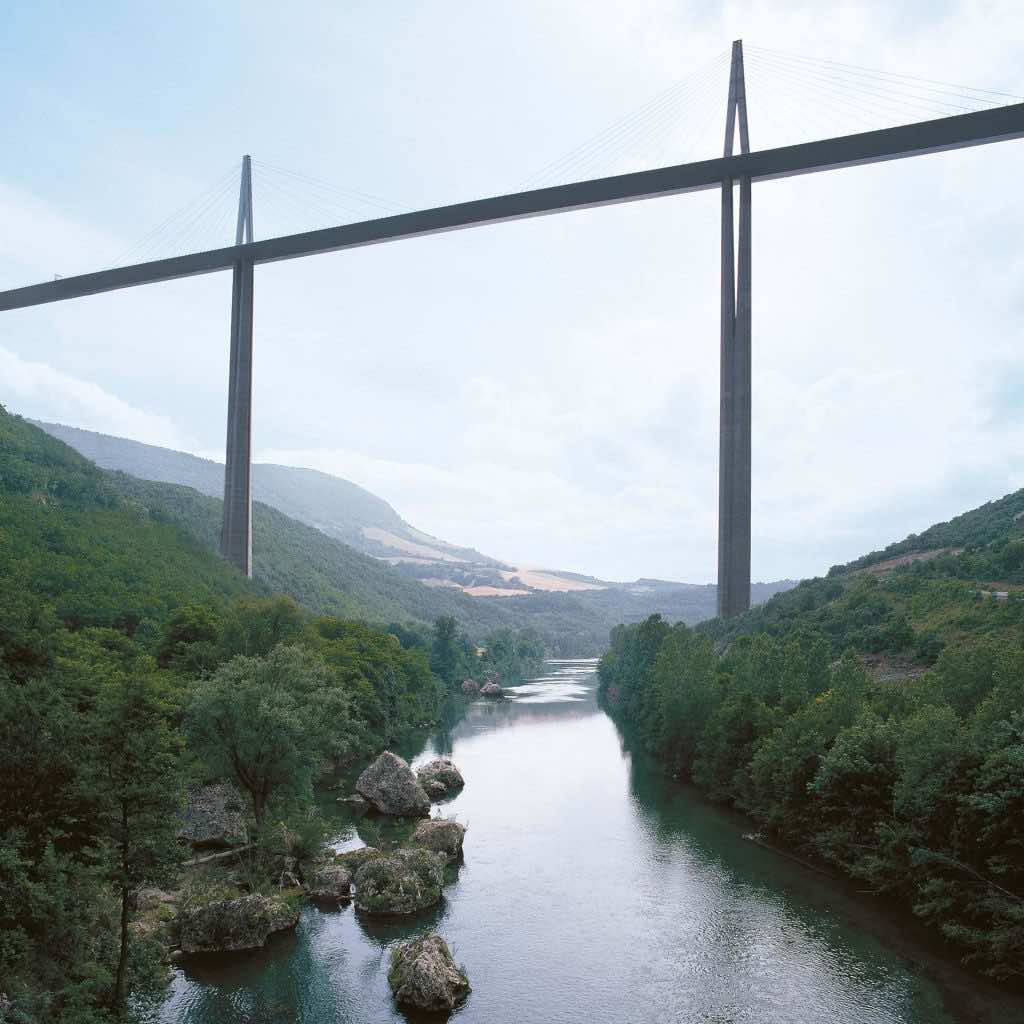The Millau Viaduct is a magnificent example of what is possible when architecture and high-tech engineering come together. It is a multi-span cable-stayed bridge completed in 2004 across the gorge valley of the Tarn near Millau in Southern France. The local government demanded that all teams interested in competing for the design contract comprise of both architectural offices and engineering firms. British award-winning architect Norman Foster and engineer Michel Virlogeux led the final design team. This marvelous structure is consistently ranked as one of the greatest engineering achievements of the modern world and it permanently solved a major congestion problem of the A75 highway in France.

Interestingly, most entries into the design competition focused on crossing the narrow river Tarn at the bottom of the valley, however Norman Foster’s team suggested crossing the valley altogether one one long span bridge. Fosters winning proposal features seven equally spaced concrete masts, the tallest of which is 245 m (804 ft) high. These split into two when they pass through the road deck, creating a needle-like eye that flexes to accommodate expansion and contraction of the deck. The masts are profiled to appear as slim as possible when viewed from the side, reducing the bridge’s impact on its surroundings. This was essential so that the picturesque valley would not be dominated by the manmade structure. The concrete deck is suspended on steel cables 90 m (295 ft) below the mast tops, which made it the highest road bridge in the world when it first opened.. The deck traces a shallow curve as it crosses the valley, allowing motorists to better appreciate the scale of the bridge as they drive across. Drivers routinely stop on the bridge itself to admire the panoramic views of southern France that the Millau Viaduct offers.

Its construction broke several records: it has the highest pylons in the world, the highest road bridge deck in Europe, and it superseded the Eiffel Tower as the tallest structure in France. It is regularly held up as a fine example of what can be produced when architects and structural engineers work in close collaboration together, in this case the result is a graceful and elegant yet massive feat of design and execution.



